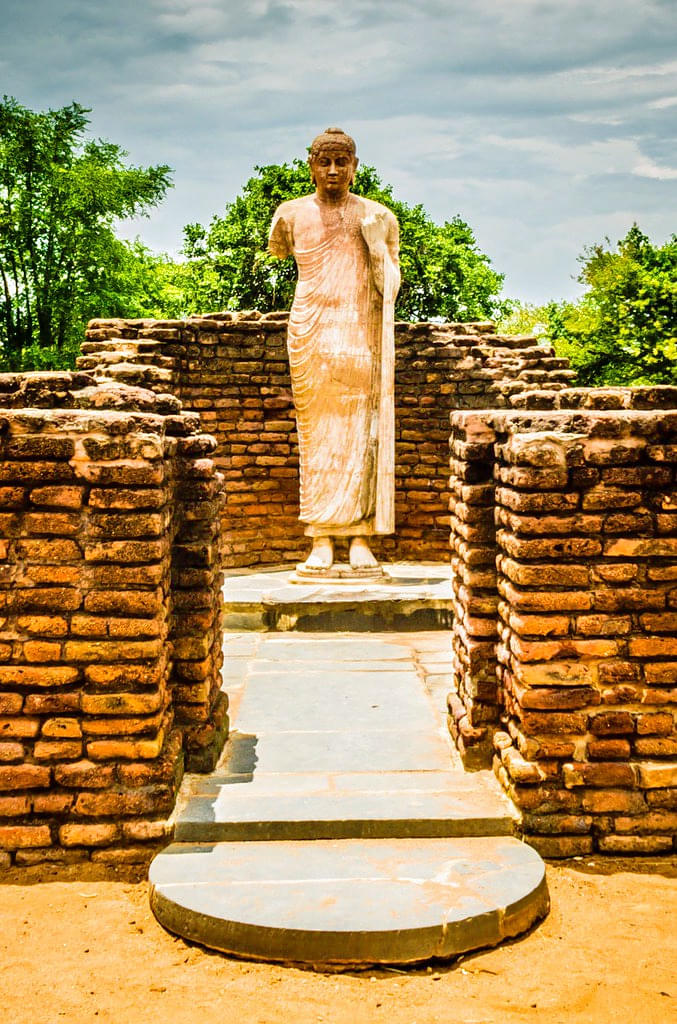About Nagarjunakonda
The historical town of Nagarjunakonda is situated near Nagarjuna Sagar in the district of Guntur, Andhra Pradesh. It is located 160 km west of the famous Amaravati Stupa. The city is named after Nagarjuna, the well-known southern Indian master of Mahayana Buddhism who lived in the 2nd century AD. Today, Nagarjunakonda is one of the most important centres of Buddhism in the world. But most of the relics now lie under the Nagarjunasagar Dam. These relics have been excavated in the recent past and have been transferred to a drier island to keep them dry and safe.
The beauty of Nagarjunakonda lies in its ancient relics. This city is an important and popular tourist spot because of its rich historical value and its unique insight into the history, growth and tenets of Buddhism. Nagarjunakonda is home to some major tourist attractions in Andhra Pradesh including the Nagarjunakonda caves and Museum, situated at the top of the hill, which caves provide a lot of information about the Buddhist population that existed there centuries ago.
The Dhamma Nagarjuna is a meditation centre that was established by the Chief Abbot of the Nalanda University to preach Buddhism in Southeast Asia. The Nagarjunasagar Dam cum Waterfall is the largest masonry dam in the world.
The Kaman Bazaar is a popular place in Nagarjunakonda, a famous market, known for clothes and various accessories. You can also visit Gandhi Chowk, which is the main market for jewellery trade in the area. One of the most thrilling activities to enjoy in Nagarjunakonda is a river cruise on the Krishna, where you can travel to an ancient island which has prehistoric and Medieval relics that have been excavated by archaeologists. it is also a great place to learn about the tenets of early Buddhism while experiencing the incredible natural beauty of the place.
The tropical city remains hot and humid through most part of the year. The summer months are from March to June when the temperatures can reach up to 45 degrees Celsius. The region receives moderate to heavy rainfall in monsoon between July to September. The winters are cool and pleasant and it lasts between October to February.
The beauty of Nagarjunakonda lies in its ancient relics. This city is an important and popular tourist spot because of its rich historical value and its unique insight into the history, growth and tenets of Buddhism. Nagarjunakonda is home to some major tourist attractions in Andhra Pradesh including the Nagarjunakonda caves and Museum, situated at the top of the hill, which caves provide a lot of information about the Buddhist population that existed there centuries ago.
The Dhamma Nagarjuna is a meditation centre that was established by the Chief Abbot of the Nalanda University to preach Buddhism in Southeast Asia. The Nagarjunasagar Dam cum Waterfall is the largest masonry dam in the world.
The Kaman Bazaar is a popular place in Nagarjunakonda, a famous market, known for clothes and various accessories. You can also visit Gandhi Chowk, which is the main market for jewellery trade in the area. One of the most thrilling activities to enjoy in Nagarjunakonda is a river cruise on the Krishna, where you can travel to an ancient island which has prehistoric and Medieval relics that have been excavated by archaeologists. it is also a great place to learn about the tenets of early Buddhism while experiencing the incredible natural beauty of the place.
The tropical city remains hot and humid through most part of the year. The summer months are from March to June when the temperatures can reach up to 45 degrees Celsius. The region receives moderate to heavy rainfall in monsoon between July to September. The winters are cool and pleasant and it lasts between October to February.
Tourism Board Alliances
More Things to do in Andhra Pradesh
Popular Related Attractions
More Andhra Pradesh Attractions
Popular Related Destinations
Why Choose Thrillophilia
Best Domestic Packages
Ladakh Tour PackagesHimachal Tour PackagesKashmir Tour PackagesRajasthan Tour PackagesAndaman Tour PackagesUttarakhand Tour PackagesGoa Tour PackagesSpiti Valley Tour PackagesNorth India Tour PackagesSouth India Tour PackagesNorth East Tour PackagesIndia Tour PackagesDelhi Tour PackagesOoty Tour PackagesGangtok Tour PackagesChikmagalur Tour PackagesSikkim Tour PackagesShimla Tour PackagesManali Tour PackagesRishikesh Tour PackagesMeghalaya Tour PackagesJim Corbett Tour PackagesMussoorie Tour PackagesArunachal Tour PackagesKerala Houseboat PackagesDarjeeling Tour PackagesLeh Ladakh Bike Trip PackagesAuli Tour PackagesNainital Tour PackagesKedarnath Tour PackagesCharDham Yatra PackagesDharamshala Tour PackagesWayanad Tour PackagesKerala Tour PackagesJaipur Tour PackagesJodhpur Tour PackagesUdaipur Tour PackagesGolden Triangle Tour PackagesMount Abu Tour PackagesRanthambore Tour PackageCordelia Cruise PackagesMunnar Tour PackagesCoorg Tour PackagesShillong Tour PackagesMahabaleshwar Tour PackagesOoty Tour PackagesKarnataka Tour PackagesSrinagar Tour PackagesDehradun Tour PackagesLonavala Tour Packages
Best International Packages
Maldives PackageBali Tour PackagesDubai Tour PackagesEurope Tour PackagesSwitzerland Tour PackagesSingapore Tour PackagesThailand Tour PackagesBhutan Tour PackagesSri Lanka Tour PackagesMauritius Tour PackagesSeychelles Tour PackagesBangkok Tour PackagesPattaya Tour PackagesGreece Tour PackagesParis Tour PackagesLondon Tour PackagesPhuket Tour PackagesNorway Northern Lights TourFinland Tour PackagesAmsterdam Tour PackagesItaly Tour PackagesIceland Tour PackagesTurkey Tour PackagesNorway Tour PackagesSpain Tour PackagesGermany Tour PackagesIstanbul Tour PackagesNepal Tour PackagesMalaysia Tour PackagesVietnam Tour PackagesAustralia Tour PackagesSouth Africa Tour PackagesJapan Tour PackagesEgypt Tour PackagesPhilippines Tour PackagesHong Kong Tour PackagesIreland Tour PackagesAfrica Tour PackagesRussia Tour PackagesKenya Tour PackagesPrague Tour PackagesMasai Mara PackagesAntarctica Tour PackagesNew Zealand Tour PackagesSweden Northern Lights PackagesDenmark Tour PackagesIsrael Tour PackagesCambodia Tour PackagesJordan Tour PackagesTanzania Tour PackagesSantorini Tour PackagesAustria Tour PackagesCroatia Tour Packages













